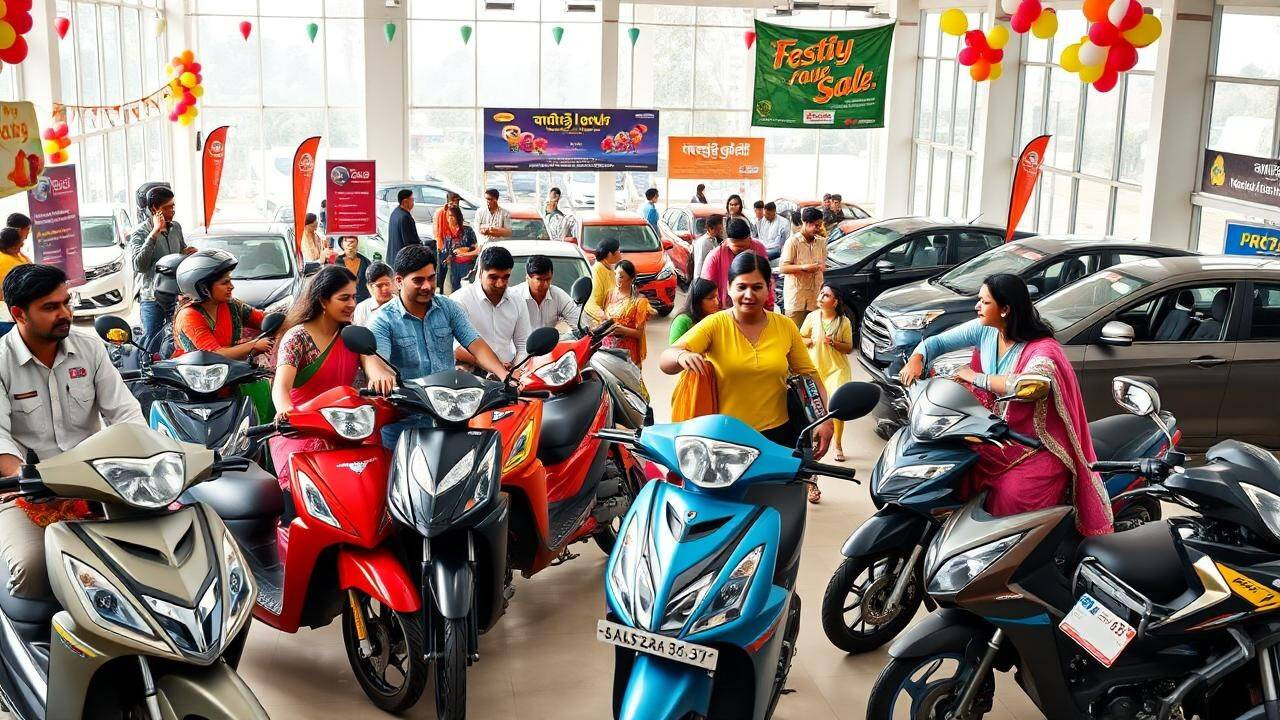Crisil Ratings anticipates a 5-6% growth in two-wheeler sales this fiscal year, spurred by recent GST rate rationalization. Passenger vehicles are expected to see a more modest 2-3% increase. The GST cut, effective September 22, lowers rates on various vehicles, boosting affordability and coinciding with the festive season, which should drive stronger demand in the automobile sector.
Will GST Tweaks Give Two-Wheeler Sales a Kickstart?
The Indian auto market, a vibrant indicator of economic health and personal aspiration, is constantly under the microscope. Lately, the spotlight has been shining on the two-wheeler segment, and whispers of potential GST (Goods and Services Tax) reforms have fueled a buzz of anticipation. Could a revised tax structure be the catalyst for a much-needed sales surge? While the four-wheeler market is predicted to experience a gentle upward tick, the impact on two-wheelers is where the real interest lies.
For years, the two-wheeler has been the workhorse of India, the vehicle of choice for millions navigating bustling city streets and connecting rural communities. It’s more than just transportation; it’s freedom, independence, and for many, a vital tool for earning a livelihood. However, recent sales figures haven’t painted the rosiest picture. Factors like rising fuel costs, inflation, and a general economic slowdown have dampened consumer enthusiasm. This is where the potential game-changing effect of GST reforms enters the conversation.
Currently, two-wheelers face a hefty 28% GST, placing them in the same tax bracket as luxury goods. Industry voices have long argued that this is disproportionately high, considering the crucial role two-wheelers play in everyday life for a large segment of the population. A reduction in the GST rate, even a modest one, could significantly lower the upfront cost of a two-wheeler, making it more accessible and affordable.

So, what’s the likely outcome? Predictions suggest that a favorable GST adjustment could propel two-wheeler sales growth by a substantial 5-6%. That’s a significant leap in a market where every percentage point counts. Imagine the ripple effect: increased production, more jobs, and a boost to the overall economy.
But the optimism surrounding two-wheelers doesn’t automatically translate to similar exuberance for four-wheelers. While a modest 2-3% growth is projected for passenger vehicles (PVs), it’s a far cry from the potential double-digit surge anticipated for their smaller counterparts. This difference underscores the price sensitivity of the Indian market, particularly when it comes to entry-level vehicles. Four-wheelers, often considered a bigger investment, are subject to different economic forces and consumer considerations.
Furthermore, the growth trajectory of two-wheelers and passenger vehicles is influenced by various micro and macro-economic factors, one of the biggest of which is consumer sentiment. Good monsoon seasons that lead to enhanced crop yield can stimulate rural demand, which is a key market for two-wheelers. The availability of easy financing options also makes a big difference. Similarly, government spending on infrastructure and positive changes in employment numbers can increase buying power, especially in urban centers where vehicle sales are driven by income.
Looking ahead, the auto industry is watching carefully. The GST Council’s decisions will have a direct impact on the affordability of two-wheelers. A supportive policy environment could unlock pent-up demand and fuel a new wave of growth. If you are interested in reading about other potential disruptors to the vehicle market, check out this article about electric vehicle adoption.
The future of India’s two-wheeler market hangs in the balance, dependent on a confluence of factors, with GST reforms playing a pivotal role. A tax cut isn’t just about cheaper bikes; it’s about empowering individuals, boosting the economy, and fueling the dreams of millions who rely on two-wheelers for their daily lives. This is an industry development that policymakers, manufacturers, and consumers alike should be closely following.







